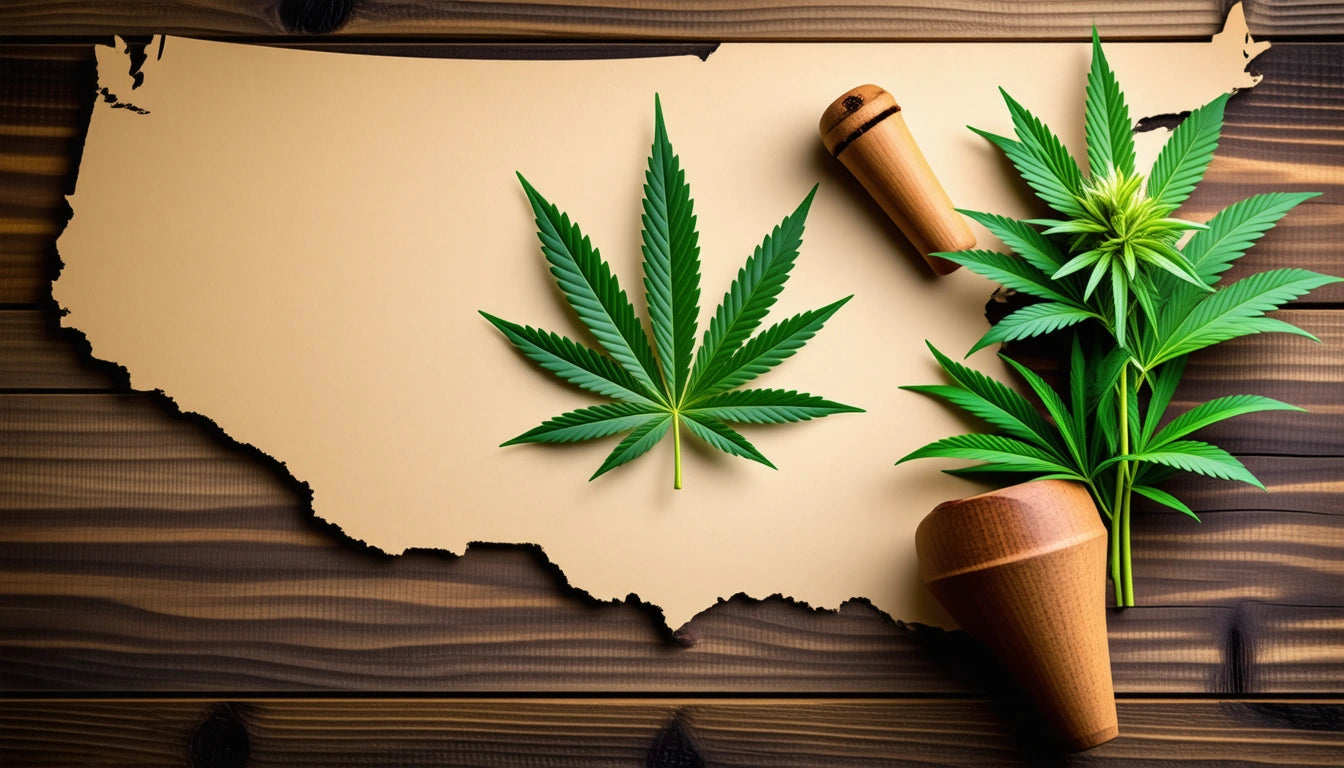Table of Contents
The History of Marijuana Legalization and Criminalization in the United States
The legal status of marijuana in the United States has undergone dramatic shifts throughout history. From its early medicinal and industrial uses to prohibition, criminalization, and the modern reform movement, cannabis policy reflects changing social attitudes, political priorities, and scientific understanding. This comprehensive timeline explores when pot was legal, when it became illegal, and the complex factors that shaped its legal status.
Early History of Cannabis in America
Cannabis has a long history in North America, with hemp cultivation dating back to the colonial era. When marijuana was brought into the USA, it was primarily valued for its fiber. Hemp was so important that in the 1700s, American farmers were legally required to grow it in several colonies.
Before the 20th century, cannabis was widely available in medicinal preparations. It appeared in the United States Pharmacopeia from 1850 until 1942, prescribed for various conditions including pain, nausea, and rheumatism. During this period, there were no federal restrictions on cannabis cultivation or consumption.
The Prohibition Era: When and Why Pot Became Illegal
The early 20th century saw a dramatic shift in marijuana policy. Why was pot made illegal is a complex question involving racial prejudice, institutional interests, and misinformation campaigns.
The first state-level prohibitions emerged between 1911 and 1933, with California, Wyoming, Texas, Iowa, Nevada, Oregon, Washington, Arkansas, and Nebraska all restricting cannabis. These early laws often targeted Mexican immigrants, who were associated with recreational marijuana use.
Harry Anslinger, the first commissioner of the Federal Bureau of Narcotics, became who made pot illegal at the federal level. His campaign against marijuana relied heavily on racism, sensationalism, and fabricated stories about cannabis-induced violence.
Key Legislation That Shaped Marijuana Policy
The Marihuana Tax Act of 1937
The Marihuana Tax Act of 1937 marks when pot was made illegal at the federal level. While technically a tax law rather than a criminal prohibition, it effectively criminalized marijuana by imposing strict regulations and harsh penalties for non-compliance. The pharmaceutical industry, which had been selling cannabis-based medicines, initially opposed the legislation but eventually accepted it.
The Controlled Substances Act of 1970
In 1970, what year did pot become illegal in its modern form, Congress passed the Controlled Substances Act. This legislation classified marijuana as a Schedule I drug, alongside heroin and LSD, indicating it had "no accepted medical use" and a "high potential for abuse." This classification, which persists today, contradicted historical medical usage and emerging research.
The Marijuana Reform Movement
The movement to reform marijuana laws began gaining momentum in the 1970s. Oregon became the first state to decriminalize small amounts of marijuana in 1973. Throughout the next decade, several other states followed with various forms of decriminalization.
The medical marijuana movement emerged in the 1990s, with California passing Proposition 215 in 1996, becoming the first state to legalize medical cannabis. This marked the beginning of a significant shift in public perception and policy regarding marijuana's therapeutic potential.
As the industry has grown, so has the need for specialized packaging solutions. Today's legal cannabis market requires compliant packaging that maintains product freshness while meeting strict regulatory standards. Child-resistant packaging options for eighth-ounce quantities have become standard in the industry, reflecting both regulatory requirements and consumer expectations for quality preservation.
State-Level Legalization Efforts
Colorado and Washington made history in 2012 as the first states to legalize recreational marijuana. This watershed moment demonstrated changing public attitudes about cannabis and created a template for other states to follow.
New Mexico joined the ranks of legal states more recently. When did New Mexico legalize pot? The state approved medical marijuana in 2007 and expanded to recreational use in 2021, with sales beginning in April 2022.
Today, the legal landscape continues to evolve rapidly. As of 2023, 38 states have legalized medical marijuana, and 23 states plus Washington D.C. have legalized recreational use for adults. This represents a dramatic shift from when did pot become illegal in America less than a century ago.
Federal vs. State Tensions
Despite state-level reforms, marijuana remains federally illegal, creating significant tensions and practical challenges. These include:
- Banking restrictions for cannabis businesses
- Interstate commerce prohibitions
- Tax complications under Section 280E
- Research limitations
- Employment and housing discrimination
This federal-state conflict creates a complex legal environment where businesses and consumers must navigate contradictory laws. The timeline of cannabis legalization shows this tension evolving over decades.
Future Outlook for Marijuana Policy in America
The future of marijuana policy in the United States appears to be moving toward broader acceptance and legalization. Public opinion polls consistently show majority support for legalization, with younger generations particularly favorable. The future of federal marijuana legalization may include:
Several reform proposals are currently under consideration at the federal level, including the MORE Act, the Cannabis Administration and Opportunity Act, and the SAFE Banking Act. While comprehensive federal legalization faces political hurdles, incremental reforms seem increasingly likely.
The cannabis industry continues to grow, creating jobs and tax revenue in states with legal markets. This economic impact strengthens the case for continued reform and creates powerful stakeholders with an interest in expanding legal access.
As we reflect on the history and reasons behind the criminalization of weed, it becomes clear that policy has often been driven by factors other than public health or scientific evidence. The ongoing shift toward legalization represents not just a change in laws, but a fundamental reevaluation of the plant's place in American society.











Leave a comment
All comments are moderated before being published.
This site is protected by hCaptcha and the hCaptcha Privacy Policy and Terms of Service apply.